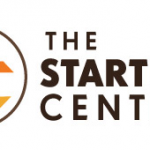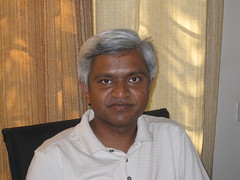Update:: The startup center website points out: Launching on May 2011 in Chennai. Entity Structuring in Progress. If interested, do get in touch. Pune plans tentatively by end of 2011.
The Name Vijay Anand, also known as The Startup Guy, is familiar to most startups in the country as the creator of India’s best known startup showcase event proto.in. Vijay is now working hard on his next initiative: The Startup Centre. For a description of the startup centre, we turn to http://thestartupcentre.ning.com the social network for the startup centre, and we find the following overview:
So What Can you Expect out of the Startup Centre?
The Startup Centre, would be a community space for Entrepreneurs, and everyone who has a spark of imagination (artists, designers, hackers), ideas and the talent and ability to execute it. If you are a one man team, or the founding team of a concept or startup, you can drop by the centre to use the facilities at a nominal fee every month – or if you are visiting from out of town – or want to check out the place, take a 24 hour access pass and use the facility. The centre will have facilities such as conference rooms, brainstorming rooms, and will also be a regular host to barcamps, and other technology/entrepreneurship/design workshops that will benefit the community. Dont be surprised if you walk in and do see a jamming session going on – by the musically inclined.The Centre also aims to play host for the other players of the ecosystem such as Accountants, lawyers, PR professionals, Venture Capitalists and Industry Mentors on a regular basis (supported on Patronage by these groups), to strengthen the support system around entrepreneurs and startups.
What the Startup Centre is Not
The Startup Centre is not a co-working space for startups to come and run their entire operations out of. This is probably only going to make sense till the stage where you are no more than just the founding team, you can afford to work in a room with nothing more than bean bags, wifi and whiteboards and to crank out the initial prototype.
Obviously, since Vijay is based in Chennai, the first edition of The Startup Centre will come up in Chennai, and the deadline for that is September. However, the most interesting thing we learned was that the second startup centre, slated for the end of 2010 is Pune. This obviously piqued the interest of PuneTech and we contacted Vijay to find out more about The Startup Centre.
Here is a short interview with Vijay about the thought process behind The Startup Centre:
Can you explain the idea behind The Startup Centre?
The notion of the startup centre came from three things:
- People need a space where they can bounce their ideas off a group of people – like a barcamp setting – get feedback and iterate on it. There is no such space like that today, and we thought we should have one.
- Everytime people from very different fields come together, some brilliant things happen. And for a startup environment – it would be sad not to tap into the diversity of population that places like Chennai and Pune have – to bring together hackers, designers, entrepreneurs, artists etc under one roof.
- There is a need for a physical space where people can “hang out’, learn about starting up – cause most of us in someway or the other found such a space – for me literally it was the Entrepreneurship centre in Canada where I dropped by whenever i had questions, used the resources etc. Here’s hoping we do such things here in India.
“Startup” can mean many different things – it could be a person with a full-time job who has a startup idea in his head, or a couple of guys working out of their homes, or it could be a small team that has a make-shift office in a flat, or even a 20 to 50 person company with a decent office space. Which of these will The Startup Centre target?
We are not an incubation centre. In the words of Alok Mittal, one of the advisors for The Startup Centre, “Its a fun place where creativity is initiated.” Its also a great place as long as its just the founding time looking to connect with such people, get a bit of confidence and finalize on their idea and maybe build out a prototype. Once you are ready to go beyond just the founding team and take on team members, you are probably better off in a incubation centre or on a space of your own – you should focus on your product and company and not get distracted. We mean startup quite literally, where idea becomes something tangible.
How would you define “success” for The Startup Centre? What kind of impact are you hoping to achieve, and how do you plan to measure it?
30 odd starting up teams working out of the space, being the host for events like Open Coffee Club, DevCamps, Barcamps, etc, and getting enough diversity of people – apart from just IT – that’d be the success of the centre in the first phase of its life. I have a feeling that a space like this will democratize entrepreneurship, new ideas, movements to people outside the tech sector and to those outside incubation centres. The momentum of the volunteering that goes into making this space successful, all of that will contribute to how much people gain out of association.
You’ve picked Pune and Chennai as the first two cities where The Startup Centre starts? Can you shed some light on the thinking process behind that decision?
I think Pune is the hottest space for startups in the country today. And it would be great if i talk less about it and keep it a secret cause what makes Bangalore a bit on the high maintenance side for startups is because of the hype around it.
I think a space where startups can thrive need students – quality students, people from diverse backgrounds, low cost of living, close proximity to a bigger metro. I think Chennai and Pune fit the bill quite well. The reason behind these two cities is also cause its not bangalore – where you necessarily dont need a centre to bring together people – there is lots of things happening as it is.
Presumably, you’re looking for an appropriate space in Pune for The Startup Centre. Can you give us an idea about what kind of a space you’re looking for? How big? Have you short-listed any specific areas of the city for this?
We are really figuring this bit out. Chennai will give a lot of insights onto this – so in a way Pune will have a much better centre than Chennai for sure – because the learnings from here will go into that. For Chennai, we are looking for roughly around 2000 – 3000 sq feet of space, preferably a hall type setting, close enough to coffee places and access and not in an IT Park. There is something about IT parks that seems to sober everyone up – the centre should ideally do the reverse of that. For Chennai we are thinking close enough to the IT corridor – in Pune, would very much like the support of the folks there to help out.
Will The Startup Centre focus on any particular sector or type of startups (e.g. IT startups), or will it welcome all types?
We are initially focusing on Internet, Mobile and Software. Cause it seems we have the capacity to guide and its known territory. We have been getting quite a bit of enquiries from artists in Chennai who want to figure out new ways of distributing music and trying out models around it, so I think local flavors will very quickly add into it.
How can the Pune startup community help with this initiative?
Very much so. I have already been getting a lot of support from Santosh and Anjali of Lipikaar / Dubzer on this regard. I plan to visit Pune sometime. We would like for the local community to in a way run it and which city other than Pune in India today has that strong a startup community to run it? We launch the centre in Chennai in Sept, give till Nov, to start work in Pune. If all goes well, hopefully we’ll see the new year with one in Pune as well.








![Reblog this post [with Zemanta]](http://img.zemanta.com/reblog_b.png?x-id=1e465248-0bf6-47a9-a176-0e8efa524b60)

![Reblog this post [with Zemanta]](http://img.zemanta.com/reblog_b.png?x-id=2857208e-4810-4bcd-9dee-379c01170f39)

![Reblog this post [with Zemanta]](http://img.zemanta.com/reblog_b.png?x-id=dcc84d57-62be-4f8c-91f4-0198c4c7a102)


